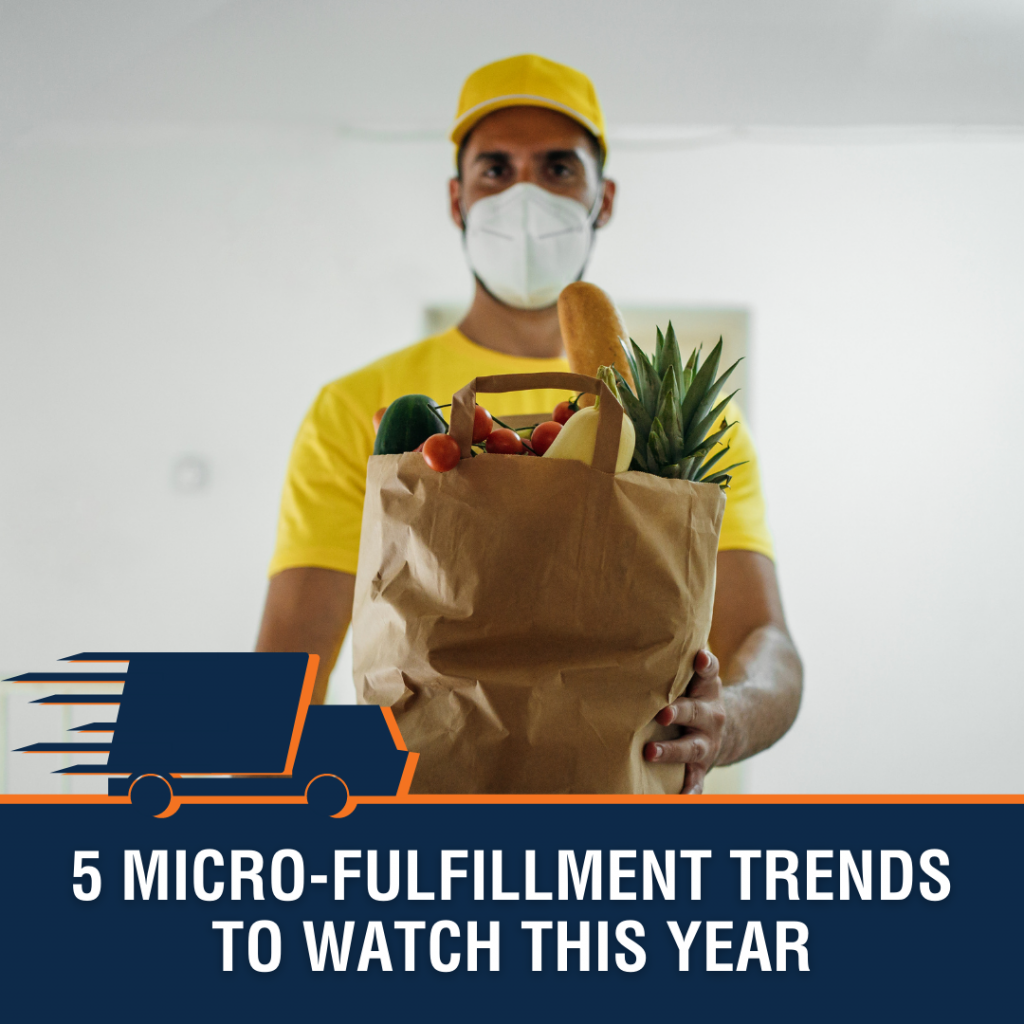We use cookies to make your experience better. To comply with the new e-Privacy directive, we need to ask for your consent to set the cookies. Learn more.
5 Micro-Fulfillment Trends to Watch This Year
Of all the micro-fulfillment trends developing in the first half of the 2020s, the most significant one is simple: rapid growth. Analysts at LogisticsIQ say there will be an installed base of around 2,000 micro-fulfillment centers (MFCs) by 2026, and the MFC industry is expected to grow from a worth of $1 billion in 2022 to $10 billion just four years later.

All in all, it appears that micro-fulfillment will become the go-to solution to online retailers’ last-mile challenge. What does all this mean to existing warehousing operations, third-party logistics providers, and the broader supply chain industry? Here are a few top micro-fulfillment trends to keep an eye on during this period of quick expansion.
1. Micro-fulfillment centers will drive down the cost of last-mile delivery.
By their nature, micro-fulfillment centers are located in customers’ communities, tacked onto existing brick-and-mortar stores or tucked into basements. Piece-based fulfillment at these facilities means you don’t need semi-trucks to haul full pallet-loads of goods. Rather than contracting with major shippers, sellers can rely on their own delivery fleets—or even turn to gig workers through a DoorDash-like delivery model.
In short, micro-fulfillment centers reduce the distance products must travel to reach buyers. That cuts costs. At a time when same-day delivery is poised to replace free, two-day shipping as the standard consumer expectation, reducing the price tag on last-mile delivery is essential for e-commerce sellers. Micro-fulfillment will be a big part of solving that puzzle.
2. Buy online/pickup curbside sales will stick around long past the pandemic that helped send the model into overdrive.
The COVID-19 pandemic helped to push an existing consumer shift toward online purchases, even for products that were slow to move away from a traditional brick-and-mortar approach. Take groceries, for instance. Just before the pandemic, e-commerce represented just 4.3 percent of all U.S. grocery sales. By the end of 2020, 10.2 percent of grocery sales took place online. The trend continues; by 2025, analysts expect e-commerce to make up 21.5 percent of grocery purchases.
Not all these online sales will be delivered. Among grocery shoppers who switched to buying online, 46 percent opted for curbside pickup and other novel fulfillment methods. Those preferences aren’t going to go away when the pandemic passes. In fact, major retailers like Amazon are already investing in “dark stores:” micro-fulfillment centers that fill orders for both curbside pickup and delivery.
3. Large grocers will lead the charge toward adoption of micro-fulfillment strategies.
Amazon isn’t the only one investing in micro-fulfillment centers. It’s established grocers, not online upstarts, who are leading the way toward decentralized e-commerce fulfillment. Late in 2020 Texas grocery chain H-E-B announced a partnership with warehouse automation company Swisslog to build multiple micro-fulfillment centers. These automated DCs will handle online orders for curbside pickup and delivery.
Other grocers are making similar moves, including FreshDirect, Albertsons, and Walmart, which is adding automated “local fulfillment centers (LFCs)” to dozens of its existing brick-and-mortar locations. The grocery industry is the testing ground for the shift from large, centralized warehouses to many micro-fulfillment facilities in population centers — but expect the trend to enter the broader e-commerce industry, as well.
4. The next generation of warehouse automation technology will emerge from the micro-fulfillment market.
Automation is a huge part of the shift to micro-fulfillment. According to one study, the labor cost of filling a $100 online order at non-automated MFC is around $10.78; with automated picking, the labor cost plummets to just $2.86. This wide deployment of automation technology in MFCs will expose problems and lead to more innovation. If you want to know where warehouse automation technology is headed, keep an eye on micro-fulfillment centers.
5. The changing nature of warehouse work will require smaller, more agile material handling solutions.
While many MFCs will be heavily automated, they’ll all still require human labor. Ergonomics, safety, and worker productivity will continue to be vital to an operation’s success. But the tools MFC employees use to achieve this safety and productivity will differ from a more traditional warehouse scenario.
Instead of forklifts and heavy material handling equipment, for instance, MFC employees may need ergonomic solutions that fit into smaller spaces. Work positioning equipment like Lift Tables and Tilt Tables will prevent the development of musculoskeletal disorders for order packers and other MFC workers. Reliable Stock Picking Carts will assist in picking and put-away tasks that can’t be automated. And curbside orders will require Contactless Delivery Lockers with smart locks that shoppers can open with an emailed code, ensuring everyone receives the correct order. To learn more about material handling equipment for micro-fulfillment centers and other warehouse applications, contact the BHS sales team at 1.800.BHS.9500.
